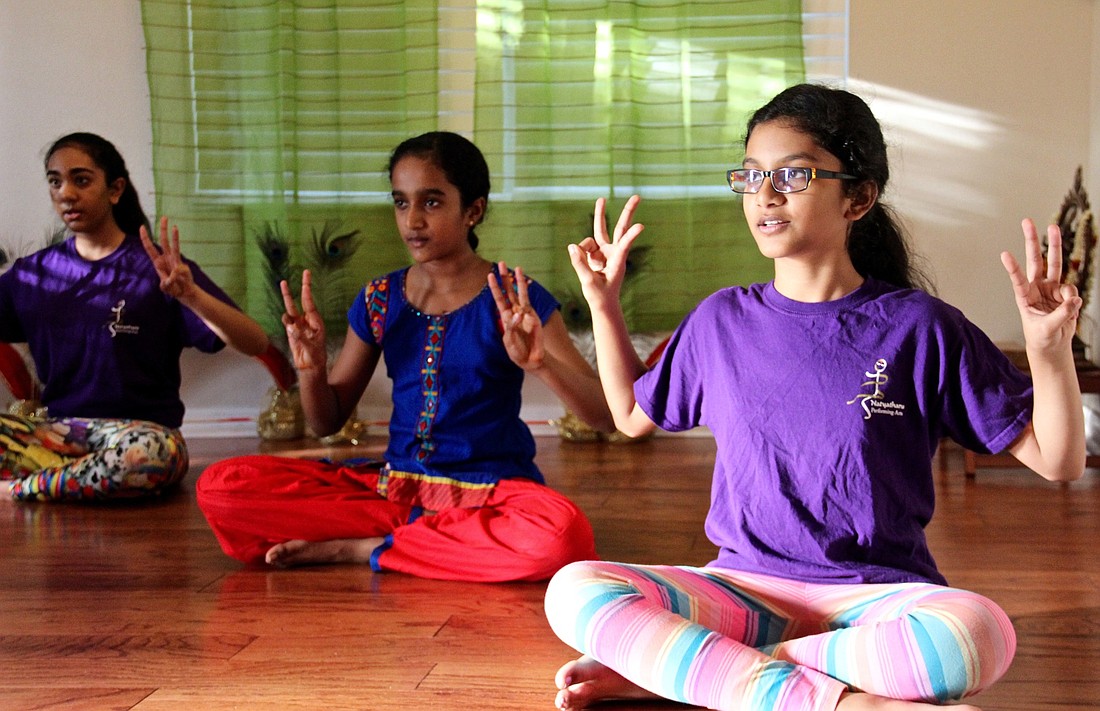- November 22, 2024
-
-
Loading

Loading

Bharathanatyam is an expressive, story-based dance with roots tied to Hindu faith as ancient as India itself.
For months and years, the students of the Natyatharu Performing Arts School have practiced the movements and expressions.
“It’s a passion,” said Nikhita Toleti. “It’s part of our culture; it originates from where we are from.”
Now the students are preparing for their annual recital which will be held at 5 p.m. Sunday, Feb. 12, at Olympia High School.
“We get to tell a story while we dance on stage,” Toleti said.
Although many of the students are fairly new to the nearly 4,000-year-old Indian dance, the school’s founder, Daveena Langton, has danced it her entire life.
Although Langton hails from Sri Lanka and not India, she began learning Bharathanatyam at the early age of 3 or 4 because she was intrigued by the art form.
“I was really fascinated with the stories and the stuff they were doing,” Langton said.
Once she started, she just couldn’t stop.
Langton studied the dance throughout her childhood and eventually went on to dance at several performing arts schools to complete her professional Bharathanatyam training. After completing her training, she went on to study Kathak and Kuchupudi - two other classical Indian dance forms.
But it was the dance itself - not the religious aspect of it - that held Langton’s interest over the years.
“Even though it comes from the (Hindu) religion, it’s more like an art,” she said. “Anybody can enjoy it.”
But Langton still keeps a dancing Shiva figurine in one corner of her studio as a reminder of the dance’s origins.
As one of eight classical, Indian dance forms, Bharathanatyam is the foundation of all the dances, which is why Langton teaches only Bharathanatyam to her students.
“It’s a very ancient dance,” she said. “It started as a solo dance, then later became a group performance, like stage performance.”
The dance itself is intricate layers of body movements, hand gestures and expressions that go hand-in-hand with Sanskrit songs telling old stories that have been passed down through generations.
“People could relate to it,” Langton said. “Now, it’s kind of changed so people like to watch groups (of dancers instead of a solo dancer).”
For many of the students, learning the dance and stories help them connect with their culture, while the songs help them learn and understand Sanskrit.
“When you hear the stories (when you’re traveling in India), you know what they are and what they mean,” said Tanvi Chirumamilla.
But remembering all the steps and gestures is one of the hardest parts of learning the dance.
“We learn how expressions go with the songs and moves,” Chirumamilla said.
In addition to the traditional Bharathanatyam dance, Langton also teaches students an Indian fusion dance that consists solely of the Bharathanatyam steps.
“It’s more contemporary,” she said. “And everyone can enjoy it.”
Classes are taught on the weekends, and Langton teaches children from ages 5 all the way though high school. But the classes don’t feel like teaching to her, she said.
“For me, it’s like I’m living through them,” Langton said. “I usually dance with them, so it’s more like a family.”
Contact Brittany Gaines at [email protected].